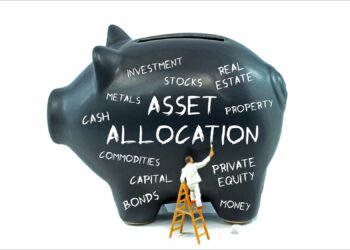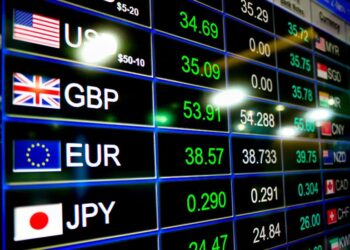When to pursue an active investing approach and when to revert to passive investing is a question that is almost as popular with investors as how to best time markets. And like the question on market timing, there is no straightforward answer.
Often lost in the debate on the merits of passive versus active investing is a true understanding of the different approaches, and how they can both benefit investors at different times.
There are pros and cons to both, and it often depends on an investor’s overall objectives along with the asset class in question.
The rising popularity of passive investing in recent years is understandable. In an environment where there is a constant drive to reduce fees, index funds and exchange-traded funds (ETFs) seemingly provide the ideal solution.
But in a world where performance is becoming harder to come by, an actively managed fund – where active investment choices are made based on analysis, research, and market knowledge and experience – might be a more attractive option.
For financial advisers, when it comes to helping clients choose which option is best, there are three key aspects to consider.
- What is the client’s objective?
- What are the fees or the related costs? and
- Which asset class is in question?
Investor objectives
The more specific or defined the investment objective is, the more likely the need for an investor’s financial adviser to work with them and address this with an actively managed fund. It’s therefore no surprise that much of an adviser’s time is spent understanding the client’s needs, and ensuring their portfolio puts in a return that meets their expectations.
If a client is simply seeking the market level return, and broad characteristics delivered by an asset class – such as the ASX 300 for Australian shares – then an index fund will do this.
It is important, however, for clients to understand that markets move up and down and that an index ASX 300 exposure means the value of their investment could fall as well as rise. The most recent market correction that marked the beginning of the global financial crisis would have seen an investment in the ASX 300 index halve from the market high point in 2007 to its low point in 2009.
If an investor wants something different to a passively tracked return – or has specific needs such as more of the return in the form of income, or perhaps has a bias towards a particular characteristic or type of stock – then an actively managed fund would be needed to achieve this.
What about fees?
Index funds typically have a lower management fee than actively managed funds, which is not a surprise. As no active assessment or investment decisions are made in managing an index fund, a comparatively smaller investment team is required.
The same cannot be said for an actively managed fund. Here, the investment team will usually conduct assessment and analysis of individual shares as well as the macro-economic environment and other relevant factors. In order to undertake this work and assessment, the resources and level of staff involved is greater.
This is one of the key reasons why an index fund can usually be offered at a lower fee level than an equivalent actively managed fund. However, in the constant drive to reduce fees and obtain value for money, many clients become hung up on the cost of the investment rather than the outcomes achieved by the adviser with the chosen strategy.
While many people may not understand all the technical elements of a managed fund, they certainly understand fees. It’s nothing new to compare or understand that there are lower, higher and mid-priced investment products.
At the same time, regardless of their level of understanding, some clients are either attracted or pre-disposed to a certain point on the pricing spectrum. But much of the price decision for any product – be it an investment product or a new TV – has some relationship to the person’s level of understanding and knowledge of the product itself.
As the level of understanding or insight increases, so does the capacity to understand and determine value in different priced products. Otherwise, if little understanding or benefit of product features and functionality is held, the more likely someone may be to purchase at a lower price – or in this instance, fee.
It then falls to the adviser to educate the client on what investment strategy is required to achieve their desired level of return, and – to paraphrase Warren Buffett – for the client to understand the difference between the price paid and the value received.
Asset class distinction
While active and passive funds are available across the spectrum of asset classes, looking at historic returns it seems there is a little more merit for actively managed funds in outperforming and adding value in some asset classes over others.
According to the Zenith Research performance surveys (to the end of May 2018), in a broad sense the median performing actively managed fund tended to outperform more often within the growth asset classes – such as shares – than they did within the defensive income-based asset classes, like fixed interest.
But the outcome of which is the better performer can and does move around over shorter-term timeframes, which is another important consideration for advisers to consider with their clients.
In the Australian market, another barrier to achieving an actively managed return that successfully beats its index in the ASX 300 is the composition of the market.
The Australian market is concentrated like no other, with the top 20 “mega-cap” stocks accounting for close to 60 percent of the total value of the S&P/ASX 300 Index. It helps that these top 20 stocks are the most liquid and that heavily weighting them means less risk, at least in terms of tracking error.
On the other side of the coin, many companies outside the top 20 are covered by just a few brokers – and in some cases, none at all. The result is a less efficient market in which favourable risk/return opportunities more frequently arise; there’s more potential to outperform the market by undertaking extensive proprietary research and profitably applying sophisticated analytical skill through active management.
In this sense, it would seem that if passive investing has a place, then (in Australia at least) that place would be in the top 20 ASX stocks where the prospects for outperformance are limited. Active fees are better spent where they earn more “bang for their buck” – and in equity markets, that is in the ex-20 market.
The question of which is better, active or passive, has been around for many years and I’m sure will continue to be asked for a long time to come.
As mentioned earlier, investors need to be clear on what their purpose or objective is, and then select funds that best align to achieve this. And of course, it doesn’t have to be an either/or proposition. Undertaking an investment strategy that combines active and passive elements can in fact deliver the best of both worlds.
Stuart Fechner is account director, research relationships at Bennelong Funds Management.





